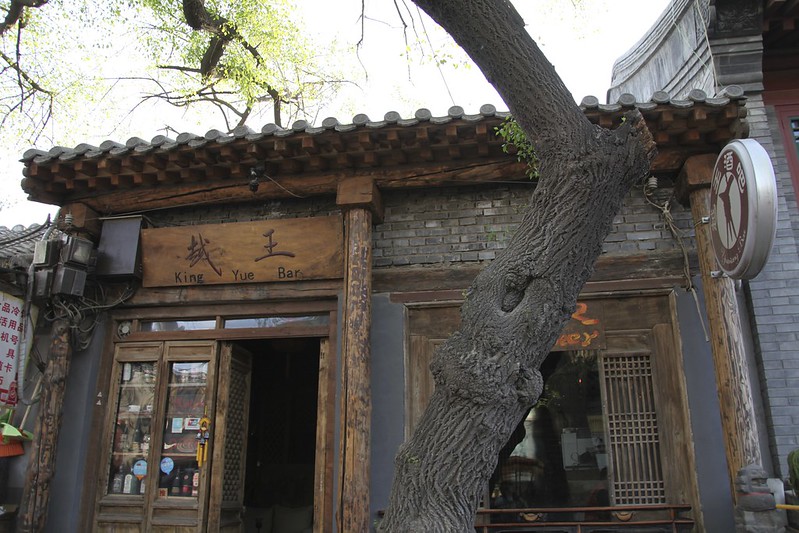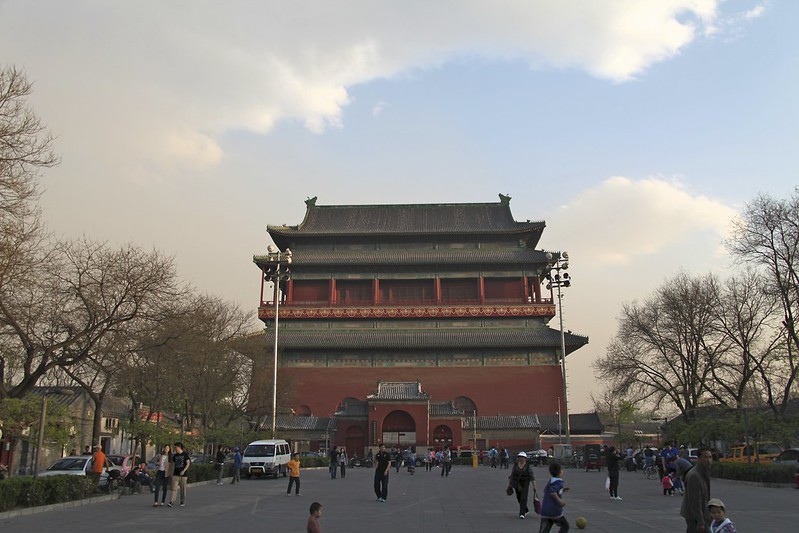Afterwards I did try to get some sleep to try and help shift to Chinese time. As normal though sleep on a plane is not easy. I did eventually choose to try again with the entertainment system when it got past 09:00 Chinese time. By 11:00 it was time for breakfast; an unusual choice of either oyster or bacon.
When we arrived at the airport it was fairly quiet so we got through and met our guide quite quickly. This did involve a brief shuttle ride from the gate to the arrivals gate. The guide that would be with us for the whole trip then met introduced us to the local guide that would be with us for Beijing. Apparently it’s normal for the luggage to be transported separately but in this instance the suitcases went with us on the coach. From there it was a 30 minute drive to the hotel.
The Beijing Radisson Blu is a pretty nice hotel with an impressive lobby. On it’s ground floor they have a shop for selling souvenirs, a restaurant and even a tailors to have clothes made. Not long after arriving we headed straight out to get something to eat. Fortunately there is a Starbucks over the road so was able to get a Danish pastry.
Back at the hotel there was just enough time to get showered before going out on the optional tour to ride a rickshaw to a hutong, an old style of neighbourhood that used to be all over China.
During the Ming dynasty hutongs formed concentric circles around which the Forbidden City was at the centre. The higher the person’s social status meant the closer to the centre they were allowed to live. Towards the end of feudal China at the end of the Qing dynasty this planning ceased and hutongs were built haphazardly with seemingly no planning. The condition of these then started to deteriorate further during the 37 years of the Republic of China. One the People’s Republic of China was formed the hutongs gradually started to disappear. Between 2005 and 2008 they then demolished 95% of them. This was so that Beijing, the “North capital”, could make way for modern “high rises” to give a cleaner image ready for the Beijing Olympics in the summer of 2008. We also learnt at this time they banned the use of coal bricks to cut down on pollution, a major difference for the environment and the image of the city.
This special add-on tour cost an extra 200 yuan (the local currency is the Renminbi with it’s denominations being the yuan and the jiao), so just over £20 at the current exchange rate.
The drive to get to the rickshaws didn’t take long and they made a few stops once we were on the rickshaws to show us parts of the hutong. One such stop was as a door to explain how the entrance way would indicate the type of person that lived there. Many years ago during the reign of Emperors, commoners could only have black doors, and red, the colour symbolising luck, was reserved for the Emperor and his family. The beams above the door was also an indication of status, there would be none, two or four. If the door had stone drums either side then it was the house of a General, and if it had stone squares it was the house of a civil servant. The majority of doors would also have a barrier to step over as well, as the Chinese believed that spirits could not lift their legs so that would stop them from entering.
[
We then continued on and went inside the courtyard of a hutong where one of the people who lived there, a descendant of one of the last Emperor’s chefs, gave us some tea to try. This particular hutong had several families there, and this part had three generations living in it. Above their dining table they also had a picture of Chairman Mao Zedong, a political figure a lot of the older generations still revere despite the controversy. After this we then headed back via a square between a drum and a bell tower.
The return journey got us back to the hotel just before 19:00 so we had some time to drop off cameras before dinner. For dinner it was a Chinese buffet with numerous dishes such as sweet and sour chicken for us to try. Already we were expected to eat like Chinese people and use only chopsticks. It had been a couple of years since I’d last used some, so it did take a while for me to get used to them again. For dessert they brought out a plate of water melon, one of the fruits I don’t like.
After two long days I was in bed by 21:00 due to the next day being an early start.
